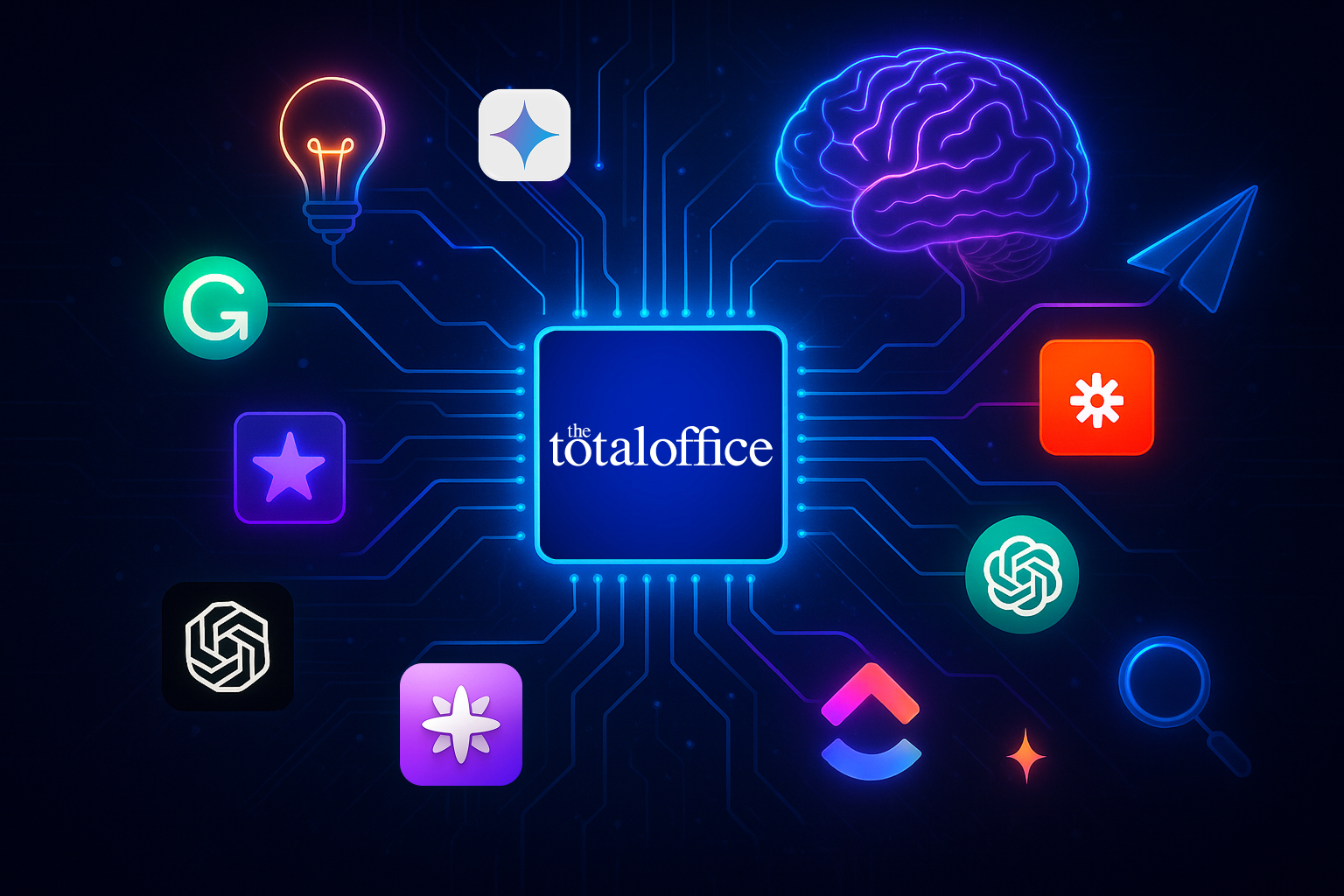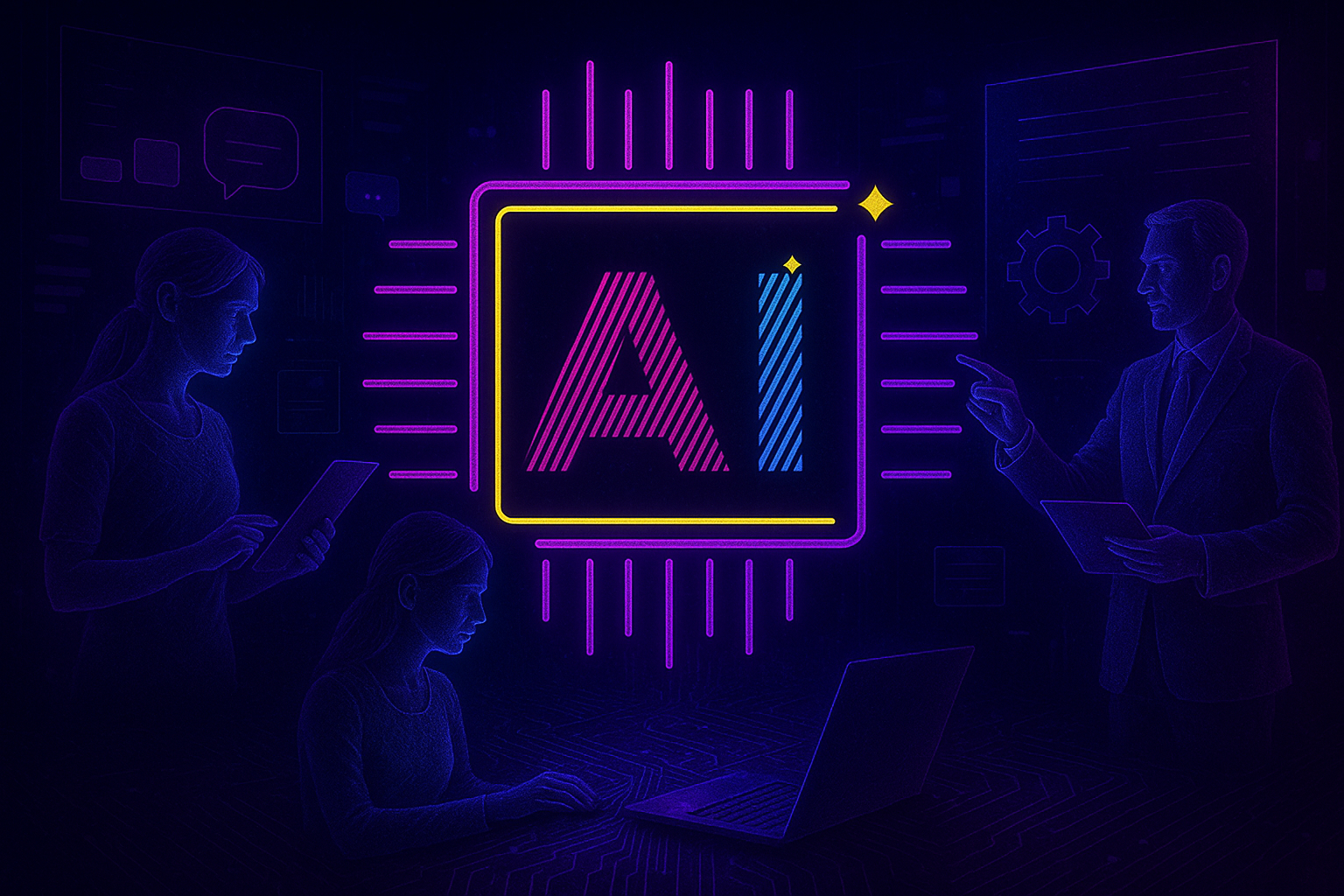Details
AI in Action: The Total Office’s Approach - How We Use AI to Streamline Our Day
24 Apr 2025Artificial Intelligence (AI) is no longer a futuristic concept - it’s reshaping how businesses operate in real-time. At The Total Office, we’ve embraced AI to streamline workflows, eliminate repetitive tasks, and create stronger collaboration across teams. By integrating a carefully selected set of free AI tools, we’ve improved everything from meeting management to data analysis and design.
This comprehensive guide reveals how we at The Total Office have embraced AI to boost productivity and streamline workflows. Whether you're a freelancer, a team lead, or part of a large organization, this article will provide actionable insights and free tools to transform your work life.
Why AI Matters in the Modern Workplace
AI is now an accessible asset for anyone looking to improve efficiency and performance. These platforms simplify routine processes, accelerate decision-making, and free up time for strategic thinking.
Imagine cutting down on repetitive tasks, receiving automated meeting summaries, or having a virtual assistant draft your emails—all made possible with AI. The beauty lies in its scalability: individuals, startups, and enterprises can all benefit.
Our Go-To AI Tools at The Total Office

Here are the eight most impactful free AI tools we rely on to boost performance across departments:
Limitless AI – Automated Meeting Summaries
Limitless AI instantly transcribes conversations and delivers action-oriented summaries. It captures key points, responsibilities, and follow-ups, helping teams stay aligned and eliminate miscommunication. Limitless AI is perfect for in-person meetings.
ClickUp – Task Management and Prioritization
ClickUp’s AI features automatically prioritize tasks based on deadlines and workloads. It intelligently assigns responsibilities and sends reminders, streamlining task execution and boosting accountability.
ChatGPT – Communication and Content Drafting
We use ChatGPT to respond to client inquiries, draft reports, and generate internal communication. Task-specific agents are trained for roles like admin or sales, helping deliver focused, efficient output.
Google Sheets + Gemini – Data Analysis
Gemini provides real-time analytics inside Google Sheets. From trend forecasting to dashboard creation, it processes large datasets quickly and provides actionable summaries.
Zapier – Workflow Automation
Zapier connects various tools to automate tasks such as email notifications, spreadsheet updates, and CRM entries. Its no-code functionality makes it ideal for non-tech users.
Sora AI – Visual Design & Collaboration
Sora AI aids in brainstorming, creating branded presentations, and generating visual assets. We use it extensively for proposals, social content, and creative documentation.
Asana AI – Performance Tracking
Asana’s AI provides insights into task completion, project timelines, and team productivity. It proactively suggests improvements, helping managers stay ahead of bottlenecks.
Grammarly AI – Document Editing
This AI-powered writing assistant ensures all communication is polished, grammatically correct, and tailored to your audience. It’s a must-have for crafting client emails or marketing copy.
Prompt Engineering: The Real Productivity Booster

The true power of AI lies in how you communicate with it. Prompt engineering—the ability to write clear, specific, and goal-driven instructions—is becoming a vital skill in the modern workplace.
Be Specific
Don’t: "Create a report."
Do: "Create a report summarizing the project status, including key metrics such as progress, outstanding tasks, and deadlines."
Provide Context
Don’t: "List project tasks."
Do: "List the tasks required to complete the client onboarding process, including deadlines and responsible team members."
Define Tone and Format
"Draft a professional email to update the team on project changes and next steps."
Use Step-by-Step Instructions
"Generate an agenda for the weekly team meeting, including sections for project updates, client feedback, and team concerns."
Iterate to Improve Results
Start broad, refine for clarity, and add specifics. AI improves output when guided progressively.
Common Prompting Mistakes to Avoid
- Vagueness: Leads to generic results.
- Overloading Requests: Break up complex tasks into manageable parts.
- Missing Context: Always add background information.
By avoiding these mistakes, you empower the AI to deliver sharper, more relevant outcomes.
Automate to Save Time
Here are examples of how to use prompt engineering to automate workflows:
- To-Do Lists: "Generate a prioritized list of tasks for the week."
- Reminders: "Create reminders for follow-up calls with clients."
- Project Tracking: "Summarize ongoing project progress and flag urgent tasks."
We’ve saved up to 2.5 hours per day on average by automating repetitive tasks—time we now dedicate to high-impact strategic work.
Best Practices for Integrating AI at Work

1. Start Small - Choose one or two AI tools to integrate. Focus on learning their core functions.
2. Train Your Team - Host short sessions to teach prompt engineering and usage basics.
3. Track ROI - Monitor time saved, output quality, and team satisfaction.
4. Iterate and Expand - Once comfortable, explore more tools and refine workflows continuously.
The Future of Work Is Now
With AI, it's not just about doing things quickly—it's about doing them strategically. For businesses operating in the complex digital sphere, AI integration can shift challenges into opportunities.
By understanding how to integrate these tools and how to communicate with them effectively, you're not just keeping up with the future of work—you're shaping it.
Stay tuned for Part 2 of this article, where we introduce a practical, easy-to-implement model to seamlessly integrate AI into your work processes. Whether you're tech-savvy or a beginner, it’s the blueprint you’ve been waiting for.
For more guidance, contact The Total Office and let us help you utilize the power of AI at work.

_1.png)